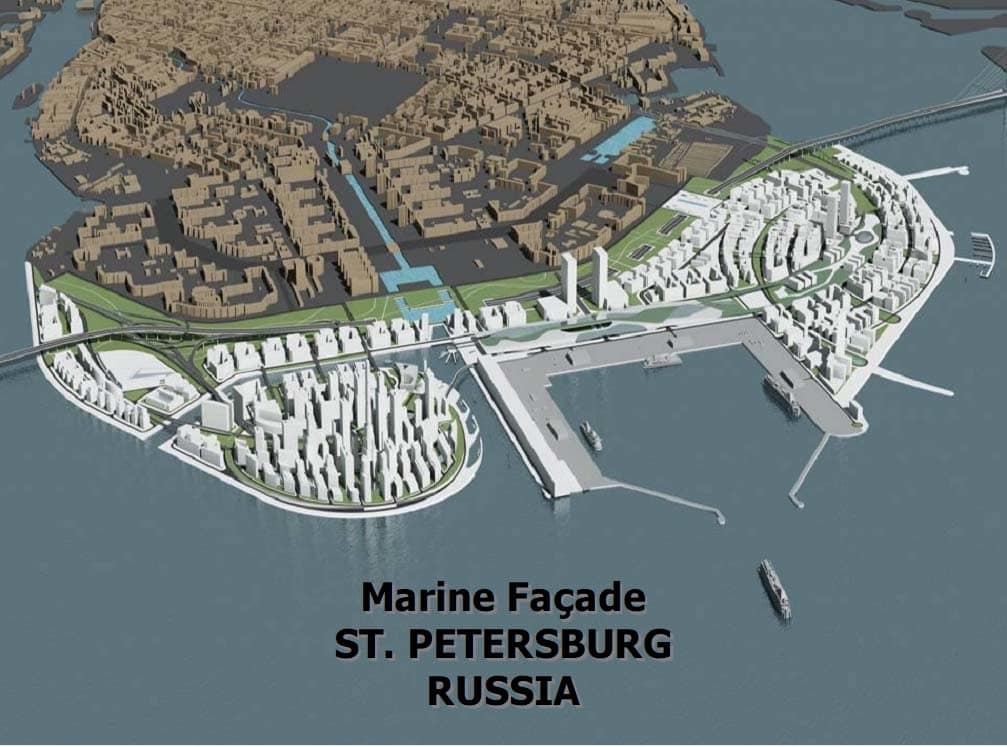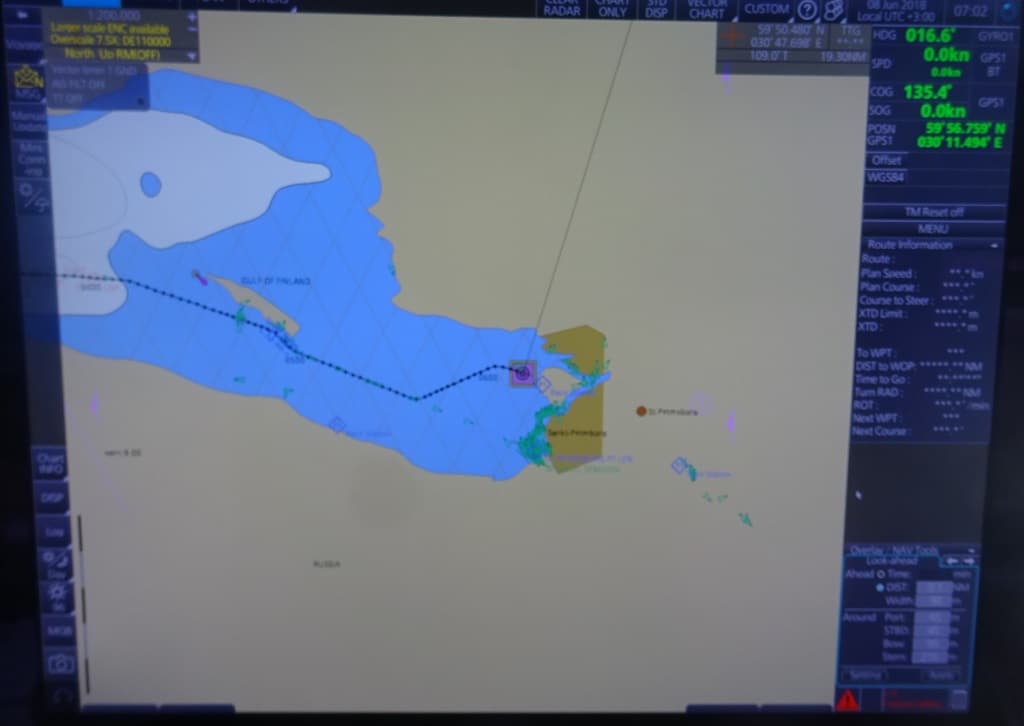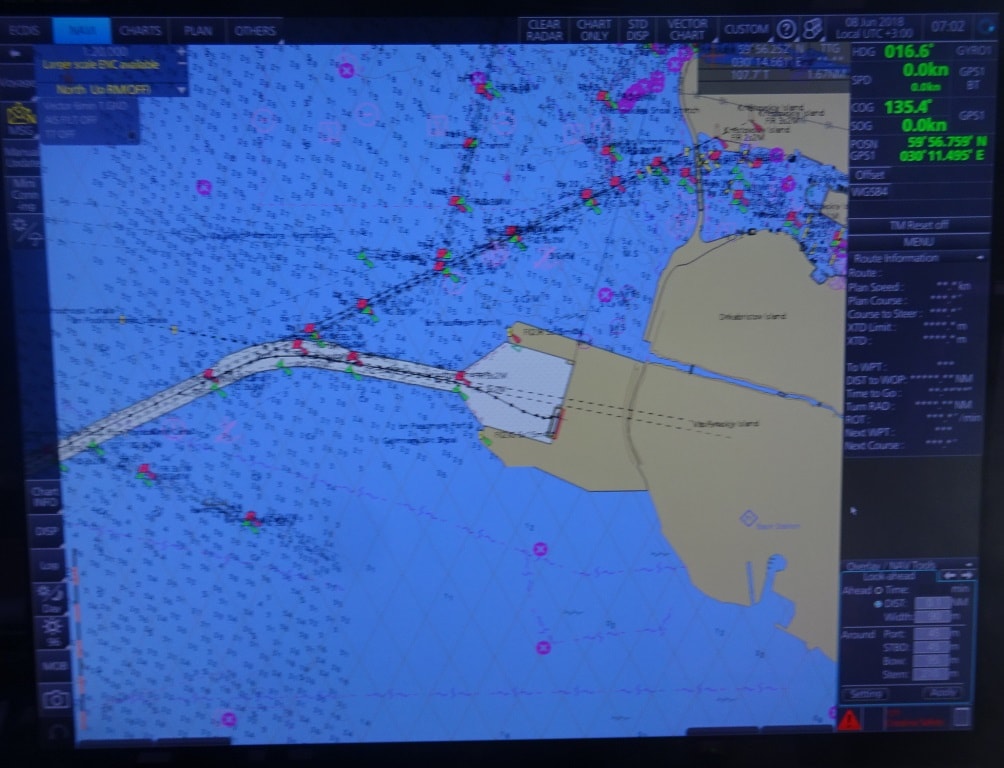The ms Prinsendam arrived at 04.00 hrs. at the pilot station and the pilot, called lootsenman came on board. That is an almost a Dutch word and that is correct as it dates back to the days of Tsar Peter the Great. He was the man who founded St.Petersburg and it was his aim to open up feudal Russia to the modern world. As those who ruled feudal Russia were not that interested Peter had to push hard and started with building a new city with about as many canals as Amsterdam; and also came to Holland to study shipbuilding so he could build a fleet of commercial and navy ships. By luck he brought a lot of Dutch naval words back that got incorporated in the Russian language. If you lay the names of all the ropes of a square rigger in Dutch and Russian next to each other then they are easily recognizable as almost being the same.
St. Petersburg was built in a swampy area same as much of the cities in the west of Holland and also more under water level than above. To deal with the problem of flooding’s caused by winter storms in the Baltic, the Russians have now built an enormous dyke with a water barrier at Kronstadt the old naval base. More about that tomorrow.

The Marine Façade a major development work started around 2007. The port has been finished for some years, they are still working very hard on the white parts on either side.
From the pilot station it is 2.5. hrs. to the dock. The dock we are nowadays using is the Marine Façade, purpose built around 2007 / 2008. It can handle with ease 8 medium size ships or 5 mega liners. They have put more mega liners alongside at the same time but that was so tight (3 feet from stern to nose) that the captains complained and I believe they are now regulating it a bit better. In the good old days we either docked in the cargo port, if you were a big ship ( what is now medium size up to 60.000 tons) or at Leutenant Smith all the way in down town, if you were no longer than 180 meters. The very small ships are still going into downtown but the Prinsendam is just too big for it, as there is a 90o turn while going stern up the river as you cannot swing around there when over 180 meters.

This is the route from the white part – deeper water – through the muddy shallows to the dock.
We need almost three hours from the pilot station to the dock as St. Petersburg is laying deep in this swampy lowland area and thus there is a vast expanse of shallow water before you reach the deeper water (which is not so deep either) of the Gulf of Finland. In the beginning ships followed the natural rivers flowing out of the St. Petersburg area but when the city grew and the ships got bigger, they started to dig channels to the open sea. They are not that wide and thus it is one way traffic for the larger ships when coming in or going out. Often we see smaller ships skipping out of the channel when a big ship is coming by and then moving back in once they have passed each other. Small ships still like to use the channel as the more water you have under the keel the faster your ship will travel. When ships move, the propellers push them down, what is called squad, and if the distance between the keel of the ship and the canal bottom is not so much there are problems with the flow of the water displaced by that ship. If that happens you can give as much power as you want but the ship will not go any faster as it cannot push the water away any faster.

This is the last part of the voyage, there were the “cruise channel” splits away from the channel going to down town following the old river bed of the river Neva, while we went a bit to the north to the Marine Façade cruise terminal.
Thus the Prinsendam can also not charge in with 20 knots as it would never attain that speed. It goes through with a sedate speed between 10 and 12 knots and thus it takes a considerable amount of time to get to the dock. We were happily docked at 07.00 hrs. ready to provide the guests with two days of Russian experience. We will sail tomorrow afternoon again and that is what most ships do. I have not come across a cruise ship yet that has come in for just one day. Even with two days you only scratch the surface of what St. Pete’s can offer, even a week would barely be enough. But cruise ships cannot do a week; it would not sell, so the cruise ships average is two days, to give the option to tour some of the highlights of the city. Winter Palace, Hermitage (that alone takes a week to see all the 1000 rooms); Peter and Paul Fortress and then we do not even mention the city itself or the ballet and other cultural options in the evening. Holland America offers a two day immersion package to the city with a 9.5 hrs. tour one day and a 10 hrs. tour the next day. This part of the new in-depth EXC tours that we offer, tours that go beyond the regular, see a church, take a photo excursions. Hard work to do, but fascinating.
It was a chilly but sunny day today, but that is not so bad, if you have to walk a lot to see the sights. Tomorrow the weather will be marginally warmer going up from 57oF to 60o F or from 14 degrees to 16 degrees Celsius and the sun will remain shining.

June 8, 2018 at 9:21 pm
Thanks for the detailed blog today on entering St Petersburg, Russia. I was there in 2013 on the Ryndam and was fascinated with it. Truly, one of the most interesting ports!